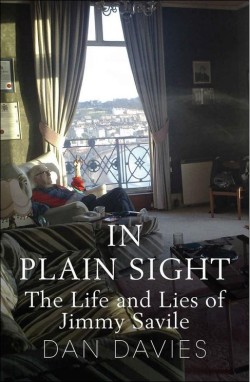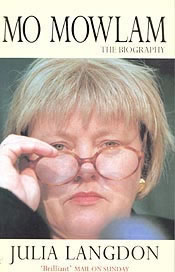The Magic of Uri Geller, as revealed by the Amazing Randi (1982)
Uri Geller is a luftmensch with chutzpah. It’s no coincidence that two Yiddish words sum him up, because Jews have been as disproportionately successful at fraud as they have been in other professions requiring high intelligence and quick wits. Chutzpah, or brazen arrogance, probably won’t need defining, but a luftmensch, for those who haven’t come across the word before, is literally an “air-man”: someone who makes a living from nothing. Geller has achieved world-wide fame and made large sums of money principally by bending spoons and keys and starting “stopped” watches. Compared to the atom bomb or the moon-landings, it’s hardly the stuff of legend, but the difference is that the men behind the atom bomb and the moon-landings didn’t put a dishonest label on what they did. Geller does and that’s why he’s been successful.
Shakespeare wrote in Romeo and Juliet: “What’s in a name? That which we call a rose by any other name would smell as sweet.” In fact, it wouldn’t: it’s well-established in psychology that labels can affect emotion and sensation. The label doesn’t even have to be verbal:
The direct relationship between the quality of a product and the colour of its container is again demonstrated by an American test in which 200 women were invited to judge the flavour of a coffee served from brown, red, blue and yellow coffee pots. Although the same coffee was served in each case, almost three quarters of those tested found the coffee from the brown pot to be too strong, whereas nearly half of the women found the coffee from the red pot to be rich and full-bodied. The coffee from the blue pot was regarded as having a milder aroma, while that from the yellow pot was judged to be made from the weaker blend of bean. (The Colour Eye, Robert Cumming and Tom Porter, BBC Books, London, 1990, “Colour and Quality”, pg. 147)
Geller attributes his trivial tricks to mysterious powers, helped by a simple equation that has been at work for many thousands of years: ignorance + emotion = the supernatural. When human beings can’t understand something and are excited by it, they have always been prone to seek a supernatural explanation (or rather, non-explanation: the supernatural explains nothing, merely allows us to conceal an epistemological gap in a psychologically satisfying way). When Geller, a master of psychological manipulation, creates emotion by bending a thick key in a way his audience can’t understand, it’s easy for him to convince the gullible that he has special powers. And we are much gullible than we’d like to believe. The Amazing Randi, the author of this debunking book, reproduced Geller’s feats before an audience of scientists, having explicitly stated he was using trickery. Maurice Wilkins, who won a Nobel prize for his part in the discovery of the structure of DNA, then told him: “Mr. Randi, you’ve told us that what you did was accomplished by trickery. But I don’t know whether to believe you or believe in you!”
After all, one of the most important points this book makes is that scientists, for all their priestly prestige and status, are not the right people to investigate Geller’s claims:
Certain prominent American scientists have said, concerning the criticisms of their acceptance of Geller, that their detractors are calling them either liars or fools. (ch. 16, “Geller in England”, pg. 256)
And since prominent American scientists are obviously neither liars nor fools, Geller must be genuine. Randi points out the false logic:
Neither is correct, so far as I am personally concerned. I call them simply “unqualified” – in this particular field – to pass judgment on such matters. (pg. 256)
A clever magician can fool a clever scientist, because deception is a magician’s stock-in-trade. Geller and Randi are both masters of deception, but Randi is honest about what he is, Geller isn’t. Randi is also a master of readable prose: I enjoyed this book a great deal, and not just because it remains highly relevant, even thirty years after Geller’s heyday. Luftmenschen with chutzpah are still with us and Geller reminds me a lot of Tony Blair. Blair isn’t Jewish, isn’t as intelligent, and hasn’t lasted as long, but the mass psychology behind both men’s success seems similar. Randi quotes the Latin saying Homo vult decipi; decipiatur: “Man wishes to be deceived; let him be deceived.”
Like Blair, Geller didn’t have to do much to convince large numbers of people that he was special, but then another important point the book makes, in Geller’s case, is that failure can even be helpful. If Geller were successful all the time, he’d look more like a fraudster who uses trickery. Occasional failure not only makes him look honest but heightens the effect of his successes too, and Randi describes how magicians sometimes exploit this aspect of human psychology by deliberately failing on something small before succeeding on something big.
And not all of Geller’s genuine failures are reported. In one of the funniest anecdotes in the book, Randi describes how, on his triumphant tour of England in the mid-1970s, Geller told a pregnant journalist that she would have a girl in three days’ time:
She had the baby, all right – a boy, a month later. Determining that the lady was expectant was all that Uri had done. And just about anyone could do that, at that stage! But what if he’d been right? The press would have trumpeted it to the world. As it was, no attention was directed to the prediction. (ch. 16, “Geller in England”, pg. 253)
Yes, it would have been trumpeted to the world, even though predicting the sex of a baby, at least, is no more difficult than predicting the fall of a coin: a 50% chance of success is hardly unfavorable. But the general public’s ignorance of probability was another factor in Geller’s success. When he appeared on a television or radio show with a large audience and predicted strange happenings among his viewers or listeners, he got a a lot of people ringing in to report exactly that: strange happenings. According to Randi, so did a “psychic” called Jim Pyczynski when he appeared on a radio show in New York: lights flickered or went out; a container of milk burst; mirrors “cracked”; pictures fell off walls; cats became agitated; and a clock that had been stopped for years started working again (ch. 12, “The Old Broken Watch Trick Revealed”, pp. 191-4).
But in fact Jim Pyczynski was Randi’s “full-time assistant” and was merely proving a statistical point: “strange happenings” are inevitable when enough people look out for them, and large audiences will also contain liars and fantasists, as well as honest people who, when prompted to do so, will notice what they had previously overlooked. Did the mirrors crack during Pyczynski’s broadcast or sometime before and without being noticed?
And again, the supernatural label helps create emotion that reinforces the appearance of the supernatural. Geller’s tricks are trivial, but we can be taken in by trivial things. Part of Randi’s animus against Geller is perhaps explained by jealousy, but then Randi does seem to be a better magician who, with less honesty, could easily have achieved what Geller has achieved. It’s easy to be a psychic, because people don’t understand how easily they can be manipulated or how predictable human psychology can be. This book or Randi’s website will tell you more about how fraudsters like Geller manipulate and exploit us. For the other side of the story, see Geller’s website, where you’ll find his chutzpah as strong as ever.

